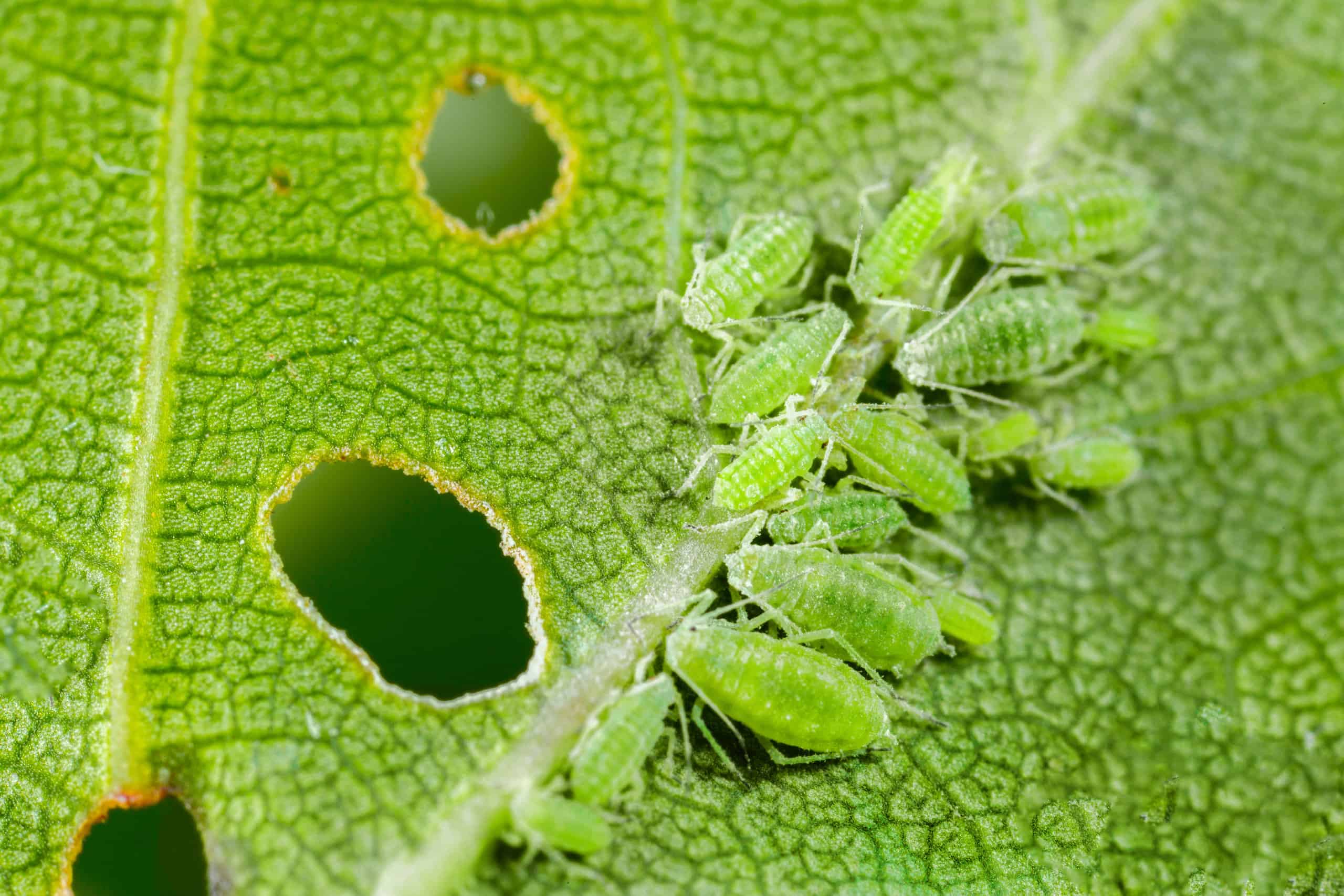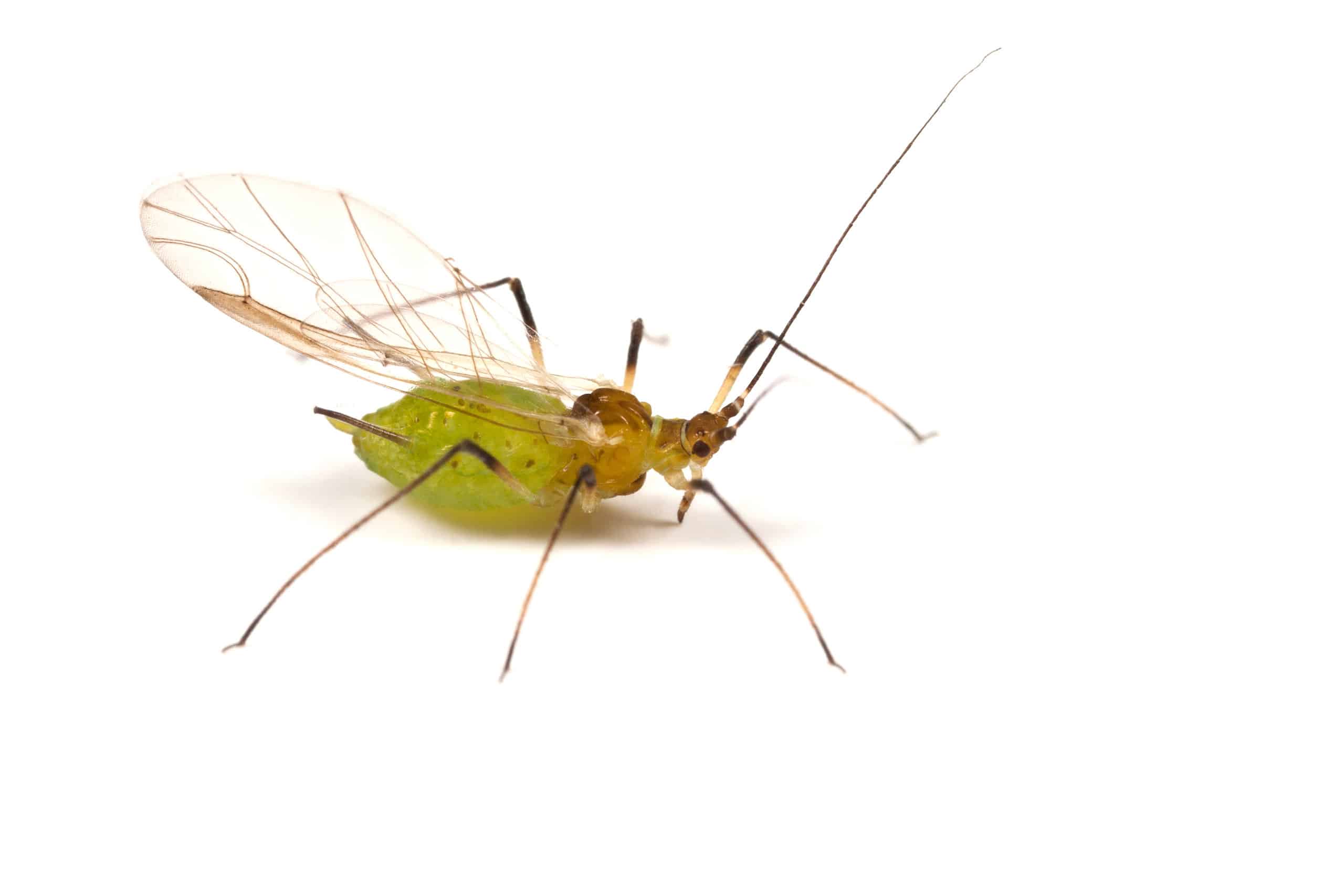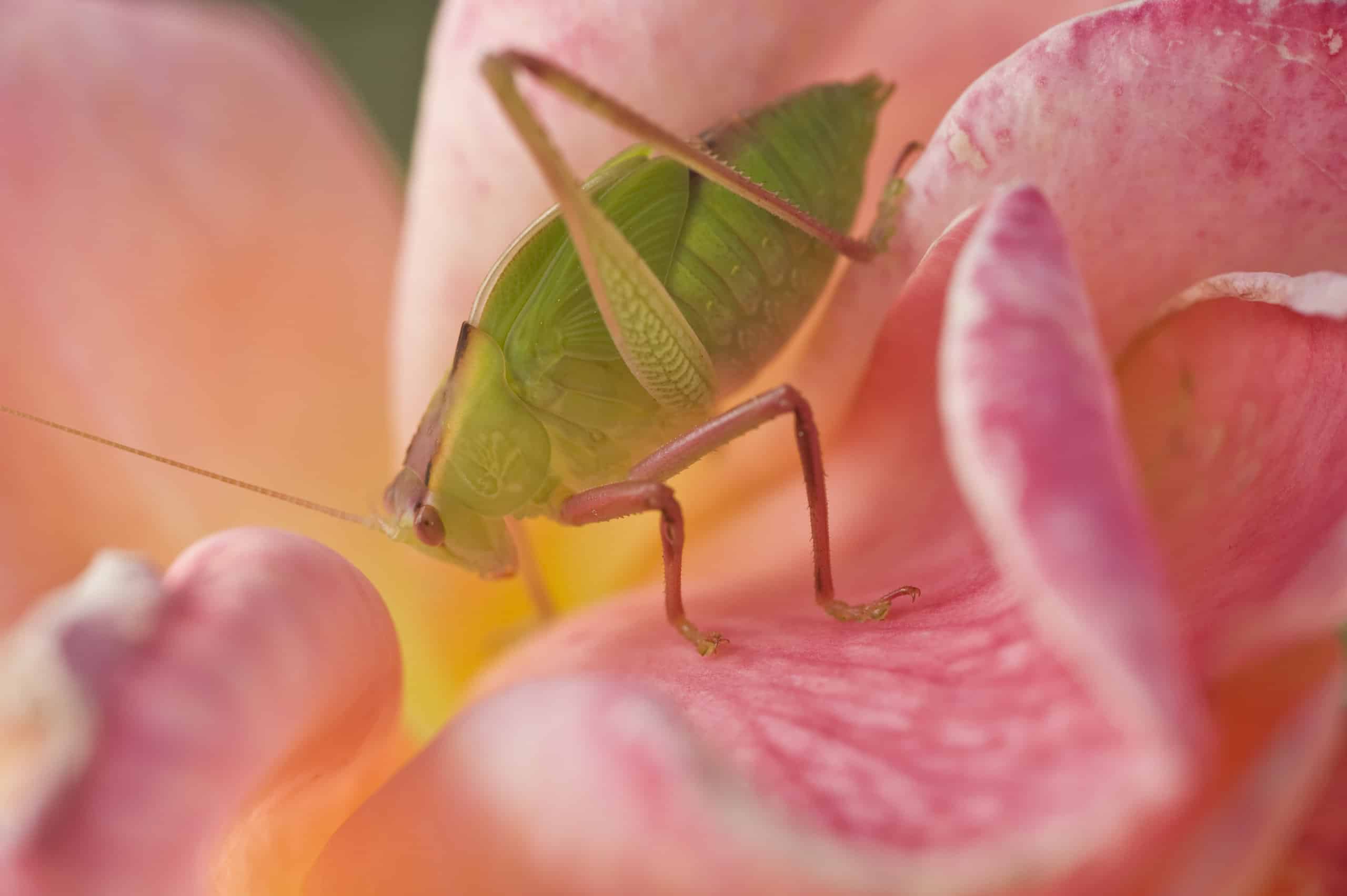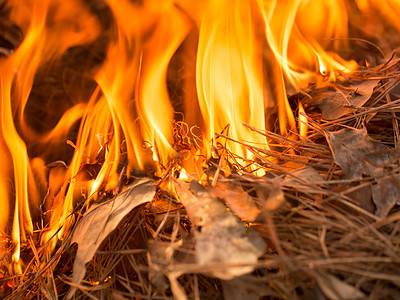Green Aphids
Advertisement
Green Aphids Scientific Classification
- Kingdom
- Animalia

Green Aphids Facts
- Diet
- Omnivore
Green Aphids Physical Characteristics
View all of the Green Aphids images!
Green Aphid Scientific Classification
Kingdom: Animalia
Phylum: Arthropoda
Class: Insecta
Order: Hemiptera
Family: Aphididae
Genus: Myzus
Species: M. persicae
Read our Complete Guide to Classification of Animals.
Green Aphid Conservation Status
Not extinct
Green Aphid Locations
Worldwide, warm climates
Green Aphid Facts
Prey: (Herbivores) Aphids suck the juices from plant leaves, stems, and roots.
Name of Young: Nymphs
Fun Fact: Green aphids reproduce asexually
Predators: Green and brown lacewings, hover flies, lady beetles, bogeyed bugs, midges, soldier beetles, damsel bugs, wasps, and blister beetles.
Habitat: New plant growth and buds
Average Reproduction Amount: 50-100
Location: Worldwide, warm climates
Green Aphids Physical Characteristics
Color: Greenish, yellow-green abdomen
Skin Type: Soft
Lifespan: approximately one month
Length: 1.5-2.6 mm
Weight: Negligible
Venomous: No
Aggression: Low/None (Not a threat to humans but can damage plants)
Green Aphid Pictures
View all of our Green Aphid pictures in the gallery.
Green aphids, also known as green peach aphids, peach potato aphids, or the greenfly are a type of aphid that is distinctively green in color.
The green aphid gets its color from the type of plants that it consumes—namely broccoli, Brussels sprouts, cabbage, celery, etc. This specific type of aphid is the most prevalent aphid pest of the peach tree. These aphids can do a ton of damage to the trees, destroying the leaves and causing tremendous damage to their various tissues.

©Vera Larina/Shutterstock.com

©Ed Phillips/Shutterstock.com

Aphids will eat up the plants in your garden!
©Ann Worthy/Shutterstock.com

©schankz/Shutterstock.com
Green Aphid Facts
- Green aphids can be found worldwide
- Green aphids do not tolerate cold weather well
- Green aphids get their color from the food they eat
- Green aphids can reproduce asexually
Green Aphid Classification and Scientific Name
The Myzus Persicae or green aphid is a type of aphid that has a very distinctive green color. The insect gets its color from the type of plants that it mainly consumes. It belongs to the order Hemiptera and is the biggest aphid threat to the peach tree. Green aphids will lay their eggs on the plants and once the nymphs hatch, they will begin feeding on the plant and causing damage to the buds, flowers, and foliage.
Green Aphid Identification and Appearance
The green aphid is anywhere from 1.8 – 2.1 mm long and appears in the summertime. It is yellow-green in color and its head and thorax are both black. When nymphs are first born, they are greenish in color and then gradually they become more yellowish. The nymphs that will eventually become winged female aphids can be pinkish in color. The wingless adult green aphids resemble the young nymphs and grow to be 1.7-2.0 mm long.
Although green aphids are known mostly to be green in color, their color can vary depending on morphological differences that are mostly influenced by the type of plants they consume as well as the temperature of the climate they live in. Green peach aphids can be their normal yellow-green color, or they could be red or brown.
Green Aphid Habitat
You may sometimes hear the green aphid being referred to as the green peach aphid, tobacco aphid, or even the spinach aphid. The green aphid gets its various names from the types of plants that it can be found feeding on most commonly. Green aphids are also found on potatoes, lettuce, tomatoes, and many other types of vegetables. They like to feed on plants that grow above the ground and leave behind an indicator of their presence — dead whitish skin. Green aphids will shed or cast their skin during different parts of their developmental stages. Sometimes these shed skins can be found on the plants that they’ve accumulated on. Sometimes the amount of shed skin left behind can be very substantial and can be a clear indicator of a green aphid infestation.
Green Aphid Conservation
As is the case with many other types of aphids, green aphids, or green peach aphids, are classified as not extinct. Because of this, the aphid is in no danger currently of becoming extinct, and therefore are no conservation efforts to preserve the species. Aphids are considered to be pests and are commonly found gathering in large colonies on plants.
Green Aphid Damage to Plants
These large groups can do a lot of damage to the plants that they accumulate on and rob the plant of its vital nutrients. Aphids feed through their mouths which are straw-like in nature. They feed by puncturing the plant with their mouths and then sucking the sugar-rich sap. They also like to feed on the leaves and roots of plants as well. They’ll use their sharp, pointed mouths to pierce through the various parts of the plants, leaving behind extensive damage that hinders or completely prevents the plant from absorbing water and nutrients, which then causes the plant to die. During the feeding process, many diseases can also be transmitted that can do great harm to the plants, even if nutrient absorption is not affected by the feeding.
You can tell that a plant has been damaged by aphids in a number of ways. If a plant has been damaged by aphids feeding on it, it may have leaves that are curled up with damaged color. Another more obvious sign would be if the plant’s leaves appear to be wet but are actually covered in a substance called honeydew. This is a substance the green aphids and many other aphid types excrete after consuming sap from the plants and trees they inhabit. It’s called honeydew because of the high sugar content which is not needed by the aphid when consuming the sap and is subsequently excreted. This honeydew can sometimes grow a black, sooty mold as well.
Green Aphid Diet
As mentioned above, green peach aphids are notorious eaters. They love to feed on the sap of many different types of plants and they can cause a lot of damage in the process. Green aphids will mainly eat vegetable plants like lettuce, potatoes, tomatoes, and hundreds of others. They will feed on any part of the plant, including the leaves, stems, flowers, and roots. This is why an infestation of green leaf aphids can be so detrimental to plants and agriculture, as they can feed so heavily on some of the most critical parts of a plant. Green peach aphids will suck the sap from a plant by puncturing it with their straw-like mouths. It gets the nutrients it needs and expels the rest of the unneeded sugars it consumed. This substance is known as honeydew which can contaminate the host plant and eventually form mold.
Green Aphid Predators
There are quite a few different types of insects that feed on aphids as one of their primary sources of food. Some of the green aphid’s predators include soldier beetles, blister beetles, midges, big-eyed bugs, damsel bugs, hover flies, green and brown lacewings, and lady beetles (ladybugs). The eating habits of these bugs are one of the most natural ways to control an infestation of green aphids in your garden. All of the ones mentioned above are insects that will naturally feed on them in the wild and help keep their population under control.
However, if you find yourself dealing with infestation levels of them in your own personal garden on your plants, you may want to consider introducing some of them into your garden to help bring down the numbers. Ladybugs can be purchased at many garden centers and can be released into your garden and onto your plants in order to help reduce the number of green aphids. They will feed on the aphids and take care of the infestation without doing harm to your plants themselves.
Some parasitic insects, like wasp larvae, will feed on green aphids from the inside out after a wasp has laid its eggs directly on the green aphid’s back. This is a terrifying process that can leave behind what appears to be hollowed-out brown shells. These are the green aphids’ carcasses after being consumed by the wasp larvae. If you see any of these shells on your plants, it is advised that you leave them there in order to help encourage the process to continue. The larvae will go on to consume more of the green aphids and continue to reduce their population.
Green Aphid Reproduction and Lifespan
Green peach aphids inhabit both garden plants and fruit trees like peach trees. During the life cycle of a green aphid, it will go through sexual and asexual reproduction periods. The green aphid has two forms—sexual and asexual. Most of the reproduction that occurs is asexual and happens through a process of parthenogenesis. This means that the growth and development of the embryo happen from an unfertilized egg cell. The full development of a green aphid occurs very quickly, with the young green aphid reaching the adult stage in as little as 5 days. Green peach aphids do not go through a pupil stage but will instead have the same appearance as an adult aphid during each nymphal stage.
After about 3 or 4 generations of green aphids inhabiting fruit trees, some of the adults begin to develop wings and will fly away to other host plants, (namely vegetable crops) and begin to reproduce there as well. The following generations of green aphids that are born on the vegetable crops from the winged aphids will be both winged and wingless. These offspring will go on to reproduce asexually.
Usually, in late August during the growing season, the winged aphids will migrate back to the fruit trees that they originally migrated away from and sexual forms of the aphid will appear for the first time. After the next mating period, the female aphids will lay their eggs on the bark of the fruit trees and the cycle continues. In total, the green peach aphids will go through 10-15 generations in a single growing period. Green aphids will typically live for approximately one month and reach the age of sexual maturity in only four to ten days.
Green Aphid Prevention
There are a few things that can be done in order to prevent a green aphid infestation. The first thing to do is make sure that you’re monitoring your plants. Early on in the season, you’ll want to check in with your plants frequently to check for the presence of aphids. Green aphids usually cause the most damage to plants during the late spring and are most active when the weather is warm or hot.
Another tip is to check for ants. If you see a lot of ants around your plants, it may be a sign that there are also green aphids. This is because ants like to consume the honeydew that aphids produce and will hang around the plants that have them. So if you see a lot of ants nearby, have a closer look at your plants to see if you spot any green aphids.
You can also plant onions near the plants that you want to protect from aphids. Aphids are repelled by the smell of onions and any other members of the onion family. If you plant onions, garlic, or even chives in your garden, you will lower the chances of green aphids establishing themselves on your plants.
Another tip is to not over-fertilize your plants. Over-fertilizing can lead to higher nitrogen levels and lots of soft growth. Aphids are known to prefer to feed on plants that have high nitrogen levels and will seek these out. It is better to fertilize your plants with a slow-release fertilizer, that way the nutrients are dispersed in a slower state and will nourish your plants over time.
Finally, if you do spot any green aphids on your plants, deal with the problem early. The longer you hold off, the more likely a small problem will turn into a bigger one and you may have an infestation on your hands in no time. If you spot green aphids, you can remove the branches or parts of the plants that they are located on, or you can hose your plant down with cold or cool water to get rid of them. You can also utilize the natural predators we mentioned earlier in the post like wasps, and ladybugs to help reduce their populations naturally.
Next Up
- Where do Aphids come from anyway? Learn about where Aphids come from as well as some of the different types there are.
- The 5 Best Insecticidal (Aphid) Soap To Protect Your Plants Read about the 5 best soaps you can use to get rid of Aphids on your plants.
- Does Neem Oil Work To Get Rid Of Aphids? Learn about how this natural repellent for Aphids works.
Green Aphids FAQs (Frequently Asked Questions)
How do you kill green aphids?
You can manage green aphids by spraying or gently wiping your plants with water and a mild soap every 2-3 days for approximately 2 weeks.
Are green aphids harmful to humans?
No, green aphids are not harmful to humans.
Can green aphids infest houseplants?
Yes, if green aphids manage to find their way inside, they can infest houseplants as well.
Thank you for reading! Have some feedback for us? Contact the AZ Animals editorial team.
Sources
- Wikipedia / Accessed July 29, 2022
- University of Minnesota Extension / Accessed July 29, 2022
- University of Florida Entomology & Nematology Dept. / Accessed July 29, 2022
















